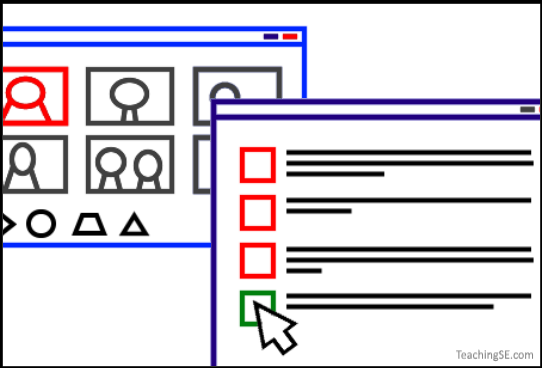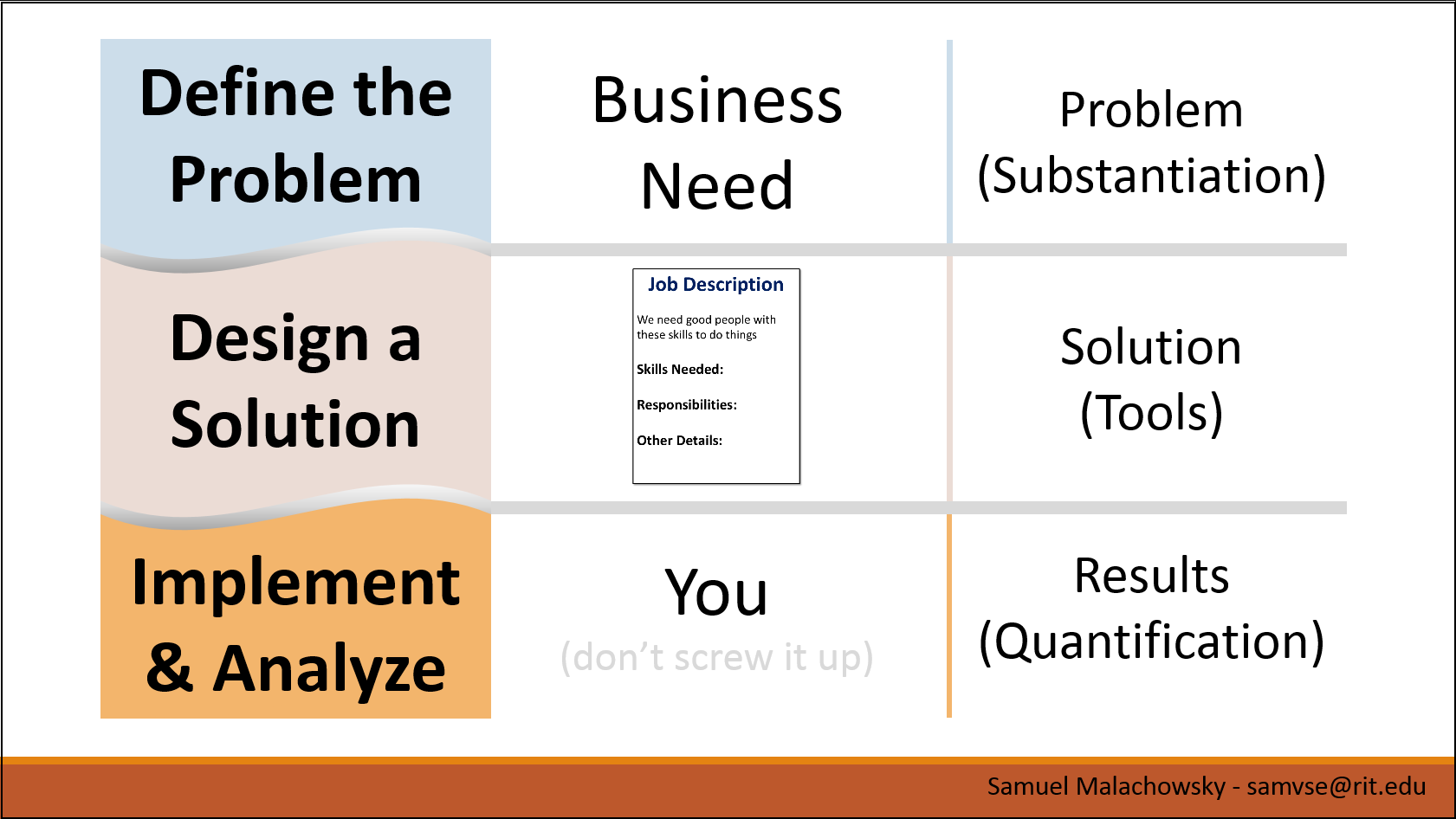The most recent 3 articles here. Archives below. Click the title for permalink.
Samuel A. Malachowsky
Senior Lecturer, Department of Software Engineering
Project Management Professional (PMP)

The teaching environment and tools nescecitated by the COVID pandemic has enabled some surprising new teaching efficiences.
 Classroom Engagement, Online Teaching
Classroom Engagement, Online Teaching2020-10-21
Instructional Changes Brought About by COVID-Necessitated Classroom Tools

Online Classes and Exams can be difficult, but they do have advantages
Thought I would share some thoughts concerning two tools commonly used in education/higher education – both of which many schools have had to rely upon more because of the COVID pandemic. These might be surprising coming from a Software Engineering professor, but full use of technology isn't always the best approach - sometimes having physical 'throwback' methods can be a welcome change or introduce surprising efficiencies. A common industry example might be using a physical KanBan board or completing planning poker with physical card decks.
The first tool involves the use of a Learning Management System (such as Brightspace, Moodle, Canvas, etc.). Essentially I think that many have (like me) noticed many benefits of automation features such as exam grading and use of built-in conversation or bulletin board tools that are likely to affect how they are used even after things ‘go back to normal.’
Exams conducted wholly online present some problems such as a large opportunity for academic dishonesty (notes, communication, or Googling answers), but their use has essentially become mandatory for want of alternitives. That being said, I’ve already decided to continue use of the tool in the future, just in an in-person, monitored environment. Conducting the exams in-person in a classroom setting allows monitoring similar to paper exams, but with the benefits of a massive reduction in grading effort, automated recordkeeping, and the possibility of instant feedback and a ‘feedback database’ with pre-worded explanations covering common errors. Because of some negative experiences I had in college (with poor professors), I’ve personally committed (with no misses so far) to returning the students’ exams graded the very next class every time – the automation components I’ve seen have made that quite a bit more feasible in terms of a personal time commitment.
Using Zoom or a similar platform has also helped me become more effective in ways I didn’t expect. Although I require in-person (either in the classroom or online via Zoom a.k.a. synchronous) attendance of lectures, I opted to cloud-record them because the option was there and it was easy to click the button. I’m happy that I’ve done this for two primary reasons:
- Though I don’t share the lectures to the entire class, there are instances of excused absences where I do choose to share it.
- More than once, I’ve referred back to lecture recordings (or automated transcription) to improve lecture content via slide or notes edits. In some cases I’ve clipped parts of the lecture video for other instructional uses – in some cases I will post good questions asked by students and my answer if I think they could benefit the class.
- A third, less important/prominent aspect here is the potential for C.Y.A. documentation, somewhat like a dashcam when driving.
I can see a fair amount of potential in combining these two tools – one example is using a cloud recorded lecture as a tracked learning objective and tying that in with an online quiz for those that were not present synchronously or if the class is primarily asynchronous.
Just some thoughts and observations concerning how I use these tools and how that may affect how I choose to instruct in the future.
Watch this video to learn how Engineers should approach adding skills and experience to their resume.
 Resume, Career
Resume, Career2020-09-25
Engineering a More Effective Resume Video

Relating the Engineering Process to the Job Search
Over the years I've been working with students to improve their resume and job search prospects. I've constantly asked myself "How should engineers approach the job search?" As demonstrated in the following video, it really comes down to the basic engineering process - it can be applied directly to these elements of the resume. The talk was kindly hosted by the Society for Software Engineers at RIT.
Here are three things that you should know about the way Software Engineers approach the world around them
 Career
Career2019-03-18
Three Things You Should Know About Software Engineers
Software Engineers have differences in communication styles, motivations, and career paths
From my experience, there are three things you should know about Software Engineers:
- They communicate differently than you might expect. It's often the technical jargon that outsiders most readily identify, but the reality is that technical processionals always prefer to understand things at the strategic level first and foremost. When successfully communicating a specific task that needs to be done, successful managers of technical teams first explain what the big picture problem/opportunity/need is, what steps have been taken thus far, and why the specific task is important.
- Their careers work differently. Software Engineers are at the forefront of the mobile workforce. While others look for upward mobility (i.e. moving up the ladder), they are more likely to look at other organizations (or themselves in the form of startups) for lateral and vertical growth. It's no coincidence that the largest job sites (Indeed, CareerBuilder, etc.) were tech-focused startups that now epitomize the culture of the tech industry, not the recruiting/headhunting industry.
- They are motivated differently. On average, Software Engineers tend towards intrinsic motivators, such as autonomy, mastery, and purpose. Though silicon valley does have its extrinsic motivations (high salaries, powerful executives, high-profile personalities), it's the companies' ability to provide a well-rounded buffet of motivations that allows them to consistently recruit top talent. Famous examples such as Google's policy of allocating 20% of employee's time to side projects of their own choosing speak directly to intrinsically-focused people.
Distributed/Scaled Agile Class Activity 
In this classroom activity, the difficulties associated with distributing project work between agile teams is demonstrated and resolved.
( Agile, Classroom Engagement, Classroom Activities, 2017-03-23)
Agile, Classroom Engagement, Classroom Activities, 2017-03-23)
Maintenance Types Activity 
This activity will help cement the three maintenance types in student's heads.
( Classroom Engagement, 2016-04-28)
Classroom Engagement, 2016-04-28)
Effectively Presenting Lists Activity 
Use this activity to creatively give students a "hook" in remembering lists.
( Classroom Activities, Classroom Engagement, 2015-02-06)
Classroom Activities, Classroom Engagement, 2015-02-06)